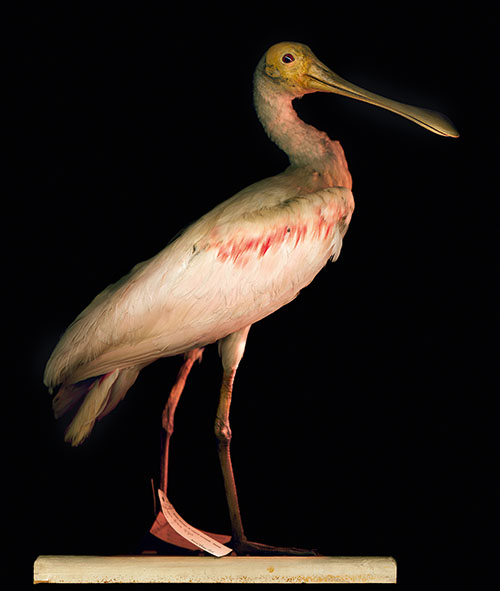Ajaia ajaja (2007)
The imaginary we collect over the years accompanies us when we try to explore any artistic discipline. The photograph of Luis Castelo is a collection of fragments of the world he wishes to treasure.
The photographer’s childhood was linked to his father’s taxidermy workshop, where he helped with any of the tasks of that occupation. It was also linked to his frequent outings to the countryside where he used to catch butterflies and insects; or to those summers when he studied and captured amphibians and reptiles.
In his head, Luis combined his interest in taxidermy with the images he saw in naturalists’ notebooks, and imagined how he could capture three-dimensional objects with a scanner.
He began manufacturing prisms and testing different illuminations to immortalize the objects he wanted to scan. In the case of Ajaia Ajaja, he needed to scan it in different fragments, which he later combined using a photo editing software. Castelo used clips, strings and other items for fastening to place the piece in the desired position.
With his proposal, Castelo explores the limits of this technological support, which, just like the camera, we can use to preserve what our memory cherishes.
Luis Castelo
Palencia, 1961
His father was a taxidermist and so the animal world has always been closely linked to Luis Castelo’s life. Since 1990, he has focused his work on searching and studying other ways of seeing nature by using scanners and other alternative instruments to the camera. He holds a PhD in Fine Arts and is a lecturer at the Complutense University of Madrid.

